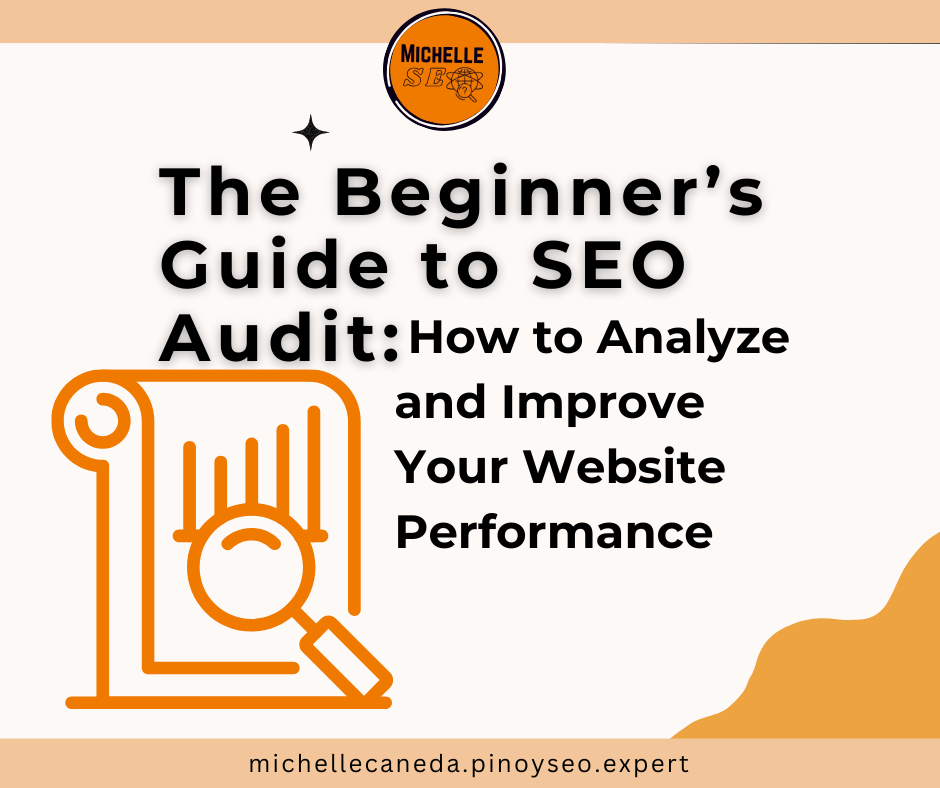SEO audit is a process of evaluating your website’s performance in terms of search engine optimization. It helps you identify and fix any issues that might be affecting your site’s ranking, traffic, and user experience. In this blog post, we will show you how to conduct a comprehensive SEO audit in four steps: technical, content, on-page, and off-page.

Technical SEO audit
The technical SEO audit focuses on the technical aspects of your website, such as site speed, mobile-friendliness, crawlability, indexability, security, and more. These factors are essential for ensuring that your site is easy to access, navigate, and understand by both users and search engines. To perform a technical SEO audit, you can use tools like Google Search Console, Google PageSpeed Insights, Google Mobile-Friendly Test, Screaming Frog SEO Spider, and others. Some of the common technical SEO issues that you should check and fix are:
- Broken links and redirects
- Duplicate or missing title tags and meta descriptions
- Missing or invalid structured data
- Slow loading pages
- Unoptimized images and videos
- Poor mobile usability
- HTTPS errors
- XML sitemap and robots.txt errors
Content SEO audit
The content SEO audit evaluates the quality and relevance of your website’s content. Content is the core of your website and it should provide value to your target audience and answer their search intent. To perform a content SEO audit, you can use tools like Google Analytics, Google Search Console, Ahrefs, Moz, and others. Some of the common content SEO issues that you should check and fix are:
- Thin or low-quality content
- Keyword cannibalization
- Content gaps and opportunities
- Content freshness and update frequency
- Content readability and formatting
- Content engagement and conversion
On-page SEO audit
The on-page SEO audit analyzes how well your website’s pages are optimized for your target keywords and topics. On-page SEO is important for helping search engines understand what your pages are about and how relevant they are to the user’s query. To perform an on-page SEO audit, you can use tools like Ahrefs, Moz, SEMrush, Yoast SEO, and others. Some of the common on-page SEO issues that you should check and fix are:
- Keyword optimization
- URL structure
- Heading tags
- Internal linking
- External linking
- Image optimization
- Schema markup
Off-page SEO audit
The off-page SEO audit assesses the popularity and authority of your website on the web. Off-page SEO is mainly influenced by the quantity and quality of backlinks that point to your site from other relevant and trustworthy sources. Backlinks are like votes of confidence that signal to search engines that your site is credible and valuable. To perform an off-page SEO audit, you can use tools like Ahrefs, Moz, Majestic, LinkResearchTools, and others. Some of the common off-page SEO issues that you should check and fix are:
- Backlink profile analysis
- Link building strategy
- Competitor analysis
- Social media presence and activity
- Online reputation management
SEO audit is a vital step for improving your website’s performance and achieving your online goals. By following these four steps, you can conduct a thorough SEO audit that will help you identify and fix any issues that might be holding back your site’s potential. Remember to monitor your site’s metrics regularly and repeat the audit process periodically to keep your site in optimal shape.

